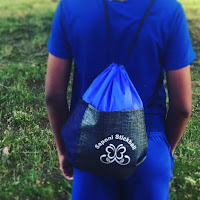What are the Types of Juvenile Arthritis?
Nearly 300,000 children – from infants to teenagers – in the U.S. have some form of arthritis. Juvenile idiopathic arthritis (JIA) is the most common type of arthritis in children. The term idiopathic means “of unknown origin.” JIA was previously called juvenile rheumatoid arthritis, or JRA. JIA is not contagious.
There are six JIA subtypes. Systemic JIA is considered an autoinflammatory disease. The other types are considered autoimmune diseases. A healthy immune system fights invaders, such as viruses and bacteria. In people with autoimmune or inflammatory diseases, the immune system doesn’t work properly. It becomes overactive even when there is no infection to fight, or it mistakenly attacks healthy cells and tissues.
- Systemic JIA causes inflammation in one or more joints and is often accompanied by a high spiking fever (103°F or higher) that lasts at least 2 weeks and a skin rash. Other possible signs include inflammation of the heart or lungs or their outer linings; anemia; or enlarged lymph nodes, liver or spleen. About 10 percent of children with JIA will have the systemic form.
- Oligoarticular JIA causes arthritis in four or fewer joints, typically the large ones (knees, ankles, elbows). Children with oligoarthritis are more likely to get uveitis (chronic eye inflammation) than those with the other subtypes. Children with a positive test for antinuclear antibody (ANA) are at greatest risk of developing eye inflammation and will need to see an eye doctor frequently.
- Polyarticular JIA causes inflammation in five or more joints, often the small joints of the fingers and hands, but weight-bearing joints and the jaw can also be affected. Polyarthritis can be rheumatoid factor-positive or negative. Rheumatoid factor-positive polyarticular, JIA closely resembles adult rheumatoid arthritis and can be a more severe disease than the RF-negative variation. About 25 percent of children with JIA will have the polyarticular form.
- Juvenile psoriatic arthritis involves arthritis that usually occurs in combination with a skin disorder called psoriasis. The psoriasis may begin many years before any joint symptoms become apparent. Joint symptoms include pain and swelling in one or more joints, often the wrists, knees, ankles, fingers and toes. Symptoms of psoriasis include a scaling red rash commonly seen behind the ears; on the eyelids, elbows and knees; at the scalp line; or in the belly button.
- Enthesitis-related JIA is characterized by tenderness where the bone meets a tendon, ligament or other connective tissue. This tenderness, known as enthesitis, accompanies the joint inflammation of arthritis. It most often affects the hips, knees and feet. Enthesitis-related arthritis may also involve inflammation in parts of the body other than the joints. Often referred to as spondyloarthritis, enthesitis-related arthritis is more common in boys and usually begins between the ages of 8 and 15. Affected children will often test positive for the HLA-B27 gene.
- Undifferentiated arthritis is the term used to describe a juvenile arthritis that does not fit into any of the above types, or that involves symptoms spanning two or more subtypes.
Juvenile Idiopathic Arthritis Causes
Researchers are uncertain what causes JIA. There is no evidence that foods, toxins, allergies or lack of vitamins play a role in developing the disease. Current research indicates that there is a genetic predisposition to JIA. More than a dozen genetic markers have been identified for JIA, and hundreds more are being considered. However, genetic markers alone can’t determine who will get arthritis. Researchers believe that a trigger, like a virus, can start the disease process in those children with the genetic tendency.
Source: Dr. Oclay Jones, Walter Reed



Comments
Post a Comment